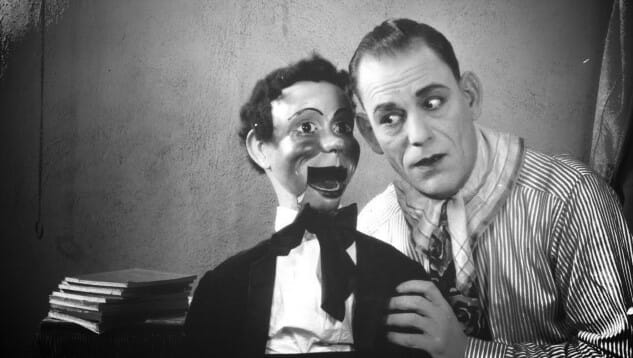
This post is part of Paste’s Century of Terror project, a countdown of the 100 best horror films of the last 100 years, culminating on Halloween. You can see the full list in the master document, which will collect each year’s individual film entry as it is posted.
The Year
It’s years like 1930 that make our Century of Terror a genuinely challenging project to undertake. Put simply, this is one of the weaker overall years in horror history, and probably the weakest year for horror in the (mostly) pre-sound era.
It’s funny to think that such a fallow year would fall now, of all times—a true calm before the storm, one year before a bumper crop completely transforms the genre in 1931. Had Universal’s Dracula but arrived a month and a half earlier (it was released Feb. 12, 1931), it would be the obvious pick for this year, blowing the rest of the competition out of the water. Instead, things get a lot more obscure, and there really isn’t any classic offering. Several of the films we discuss this year are tenuously “horror” at best.
Old Dark House movies at least have some representation in 1930, although Rupert Julian’s The Cat Creeps, one of several remakes of The Cat and the Canary, is now considered lost. The most notable of the other films is The Bat Whispers, another by-the-books Old Dark House yarn about a masked bank robber/potential monster named The Bat who terrorizes the inhabitants of a country house on a dark and stormy night. Although a serviceable example of the genre, the film is remembered by many today as being a potential inspiration for Batman, as cited by the character’s co-creator, Bob Kane, rather than for its other merits.
Ingagi, meanwhile, is mostly just notable as an example of the era’s incredible racial insensitivity, as the tale about African women (white actors in blackface) breeding with monstrous gorillas was indicative of the purportedly “ethnographic” films of the time, which were in reality largely excuses to deliver nudity and sexual suggestiveness on screen under the guise of “education” on foreign/savage cultures.
1930 Honorable Mentions: The Bat Whispers, The Cat Creeps, Ingagi
The Film: The Unholy Three
Director: Jack Conway
The Unholy Three is noteworthy for a few reasons, although in truth it’s more of a crime thriller or melodrama first, with horror elements second. It’s a sound remake of a silent film made only five years earlier, by future Dracula and Freaks director Tod Browning, and the two films are actually quite similar, although the silent precurosor is a bit more polished. Of the titular “three,” two of the more important players return: Lon Chaney and little person actor Harry Doll Earles.
The rather implausible plot of The Unholy Three involves a trio of circus performers—a ventriloquist ringleader (Chaney), a strongman (Ivan Linow) and “20-inch man” sideshow act Tweedledee (Earles)—who go on the lam and disguise themselves as pet store proprietors in a scheme to rob their customers. This involves adult little person Earles posing as a baby, and Chaney’s character posing as a grandmother, among other things, and the hijinks quickly escalate from petty larceny all the way to murder. There’s mayhem, double-crossing and a literal gorilla on the loose at one point, making the story sound like a farce, but it’s all played fairly straight.
Today, the film is remembered for a few reasons—the presence of Earles, who would go on to be one of Hollywood’s most visible little person performers, including a member of the Lollipop Guild in The Wizard of Oz, but mostly for the fact that it proved to be Chaney’s final feature film before his death from throat cancer only a month after its release. As a result, the film proved to be Chaney’s only talkie performance.
With that in mind, The Unholy Three remake actually goes a long way in bolstering Chaney’s legend by showing that he did indeed have the chops to make the transition into the sound era. His presence is considerably more natural and magnetic than anyone else in the film, and he seems at ease with a new style of performance. It’s certainly enough to make you wonder what kind of character he would have brought to Count Dracula, had he survived and been cast in the part, as Universal fully intended. To think of how different vampire film history might have turned out, if it was Chaney, rather than Lugosi, playing Dracula! It will forever remain one of horror’s biggest “what-ifs.”
Stay tuned, because 1931 is the year that changes the horror genre forever.
Jim Vorel is a Paste staff writer and resident horror guru. You can follow him on Twitter for more film and TV writing.